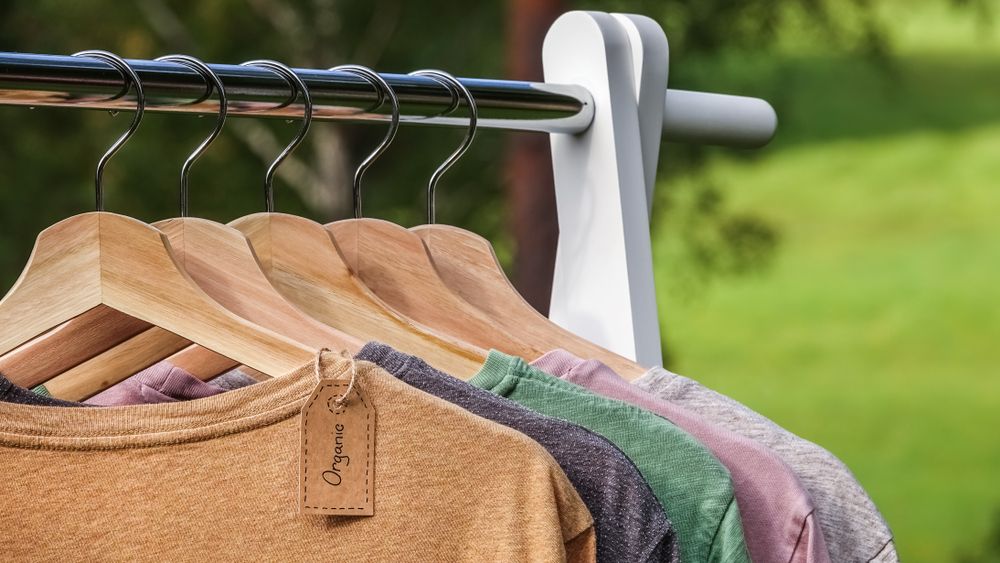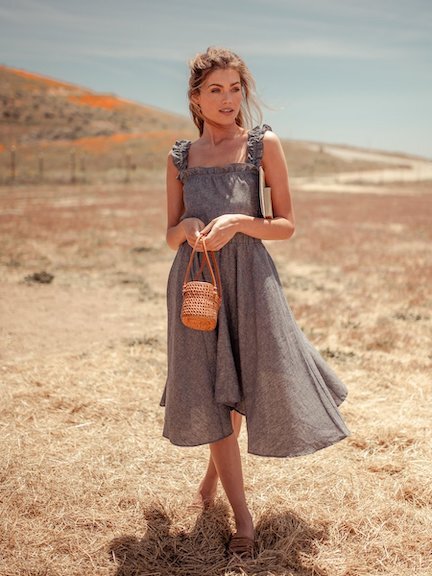Great Advice On Selecting Bamboo Clothes
Wiki Article
Why Is Hemp More Bidegradable, Durable And Regenerative Than Cotton, For Instance?
Hemp is thought to be more biodegradable due its inherent properties and the way hemp grows. Here's why- Biodegradability-
Natural Fiber- Hemp fibers are made from an organic plant that can be biodegradable. Fabrics and clothes made of hemp degrade over time. The waste is then returned to the earth without any long-lasting negative effects. Compare this to synthetic fibers like polyester, which may take hundreds of year to break down.
Lack of Synthetic Additives- Hemp textiles usually don't contain synthetic additives or chemical treatments that hinder biodegradability. Contrary to cotton, that may have chemical compounds made from synthetic materials (such as dyes and finishers) which can hinder biodegradation, hemp fibers do not.
Durability-
Hemp is renowned for its strength and durability. Hemp textiles, clothing, and other items are more robust than cotton. Hemp garments are durable and washable more times before showing indications of wear.
Hemp fabrics tend to be less prone to pill (the formation small fuzzy ball on the surface of the fabric) than cotton. This is a factor that contributes to their longevity and quality.
Regenerative Agriculture-
Soil Health- Hemp cultivating is an effective regenerative process when sustainable. Hemp has a deep root structure that can prevent compaction and soil erosion. It also helps improve soil health through aerating and enhancing the activity of microbial organisms. This regenerative aspect could leave the soil in a better state for future crops.
Low Environmental Impact - Sustainable hemp cultivation techniques generally use low levels of pesticides and herbicides to reduce environmental harm. In contrast, conventional cotton farming can result in degrading soils and water pollution because of its dependence on synthetic chemicals.
Water Efficiency-
Hemp usually requires less than cotton to thrive. Because of its drought-resistant qualities hemp can thrive with very little irrigation or rainfall. It is a water-efficient option in particular for areas that are resource-limited.
Hemp can be easily incorporated in crop rotations that improve the health of soil. It may also lower the risk for disease accumulation and soil depletion. Crop rotation isn't as prevalent in the traditional cotton farming.
Hemp has plenty of versatility. It can be utilized to make a range of items, including paper, clothing, building material, and textiles. The versatility of hemp implies that it is able to support a variety of industries using eco-friendly, sustainable practices.
In addition to these advantages of hemp, it's also essential to know that hemp and cotton can be grown sustainably (or not) according to the techniques used in farming and the processing techniques. Selecting hemp products produced using eco-friendly and ethical methods can increase its environmental advantages. Organic cotton products are a good way to reduce the impact on the environment of conventional cotton. Follow the recommended linked here about hemp clothes for website info including patagonia hemp vest, hemp pants mens, hoodlamb coat, wholesale hemp fabric, hemp long sleeve shirt, hemp hoodie, hemp fabric by the yard, patagonia hemp pants, jungmaven t shirt, hemp athletic wear and more.
What Is It That Gives Hemp Fibres Its Breathable, Moisture-Wicking And Thermoregulating Properties?
Hemp fibres have unique chemical and structural characteristics that make them breathable. They are also moisture-wicking. These characteristics are a result of the following factors. Microstructure- Hemp fibres have a hollow, porous structure which allows air to circulate inside the fibers. Natural porosity is what makes hemp fabrics extremely air-tight. When knitted or woven into fabric, this structure allows air to flow through the fabric, which promotes ventilation and prevents the trapping of moisture and heat against the skin.
Hemp fibers are able to absorb water and wick away moisture. When you wear hemp clothes they can absorb moisture and sweat from your skin, eliminating the feeling of being wet. Hemp fibers can also wick moisture away from your body by spreading the moisture across an extensive surface that lets it evaporate more quickly. The ability to wick moisture keeps you comfortable and dry when exercising or in the summer heat.
Hemp fibres possess natural insulation properties. They can trap the body's heat, providing warmth when it's cold. However, they let the excess heat and moisture escape when it's hot, helping to cool you down. The inherent thermoregulation ability makes hemp clothing suitable for a variety of temperatures and sports.
Hemp fibers are naturally antimicrobial, and can inhibit the growth of bacteria that cause odors. This property helps keep hemp clothing clean and free from odors even after intense physical activity.
Hemp fibers are durable and durable. They can last for a long time. Fabrics made of hemp fibres will keep their breathable and moisture wicking capability even after repeated washings and wear. This makes hemp clothes to last longer, which decreases the necessity of replacing them and, thus, the environmental impact.
UV Protection Hemp fibers are a natural UV protectant, shielding the skin from harmful UV Rays. Being able to block UV radiation makes hemp clothing suitable for outdoor activities.
It's crucial to understand that these qualities are inherent in hemp fibers and aren't dependent on chemical treatments or other additives. Hemp has natural properties that makes it a comfortable and sustainable choice for clothing. Additionally, these characteristics remain intact even when hemp fibers are processed into textiles. Read the best hemp clothes info for more tips including patagonia hemp work pants, hemp trousers, hemp bathing suit, hemp jeans, patagonia double knee pants, hemp tank top, hemp shirts wholesale, patagonia hemp pants, hemp button down shirt, hemp apparel fabric and more.

What are the differences between hemp and bamboo fibers?
Bamboo and hemp are two different plant-based fibers that are used in the production of textiles Each with distinct qualities and characteristics. Here are a few of the major distinctions between bamboo and hemp fibre- 1. Plant Source-
Hemp Fibers Hemp fibers are obtained from hemp stalks, most specifically the outer bast. Hemp is an adaptable and fast-growing crop that has been utilized in a variety of ways over the years.
Bamboo fibers are made from the pulp produced by the bamboo plant. Bamboo is a fast-growing grass species known for its rapid renewal and long-term sustainability.
2. Fiber Characteristics
Hemp- Hemp fibres are well-known for their strength and durable. They are among the most durable natural fibers, and soften after washing and are therefore suitable for long-lasting textiles.
Bamboo bamboo is a soft, silky fiber. They're not as durable like hemp fibers and may be more delicate, however they are prized because of their softness against the skin.
3. Texture and Feel-
Hemp- Hemp fabrics have an abrasive, textured feeling in their natural state. Although it can be an incredibly comfortable fabric, the texture is different from bamboo.
Bamboo fabric is silky smooth and very soft. It has been described as a mixture of silk and cotton.
4. Breathability is crucial, as well as moisture-wicking.
Hemp Fibers Hemp fibers help to absorb water and are naturally and breathable. They keep you cool and dry in hot temperatures.
Bamboo bamboo fibers are highly water-wicking and breathable. The micro-gaps improve the capacity of these fibers to regulate moisture and temperatures, keeping you comfortable no matter what conditions.
5. Environmental Impact-
Hemp- Hemp is considered as an eco-friendly fibre due to its water-required minimum, fast growth, and resistance to pests, reducing the need for pesticides and herbicides. It can also absorb carbon dioxide from the air as it grows.
Bamboo- Bamboo is famous for its long-lasting nature. It grows quickly, requires minimal water and can be planted without herbicides or pesticides. Some bamboo species, such as Moso Bamboo, are thought to be extremely sustainable.
6. Processing-
Hemp- Hemp fibers must be extensively processed to separate the outer bast fibers from their inner core. Processing may include retting or decortication.
Bamboo- Bamboo fibers can be extracted using a chemical known as the viscose process. It involves using chemical substances to degrade the bamboo fiber. This can be damaging to the environment if not handled responsibly. However, some bamboo fabrics use closed-loop methods that help reduce the amount of chemical waste.
7. Versatility-
Hemp- Hemp fibres can be used for a wide range of purposes, such as clothing, textiles, and paper. They also make great building materials.
Bamboo- Bamboo fibers are primarily used in textiles and clothing, but they are also used in other items such as sheets and towels.
Both hemps and bamboos offer benefits in terms of sustainability and unique qualities. The decision between the two depends on the characteristics you look for in a cloth and your environmental preference. Read the top bamboo clothes for blog examples including bamboo clothing leggings, t shirts bamboo, bamboo childrens clothing, bamboo t shirts mens, bamboo hawaiian shirts, rayon from bamboo fabric, bamboo button down shirts, bamboo clothing sustainable, ladies bamboo pants, checkered bamboo pajamas and more.

